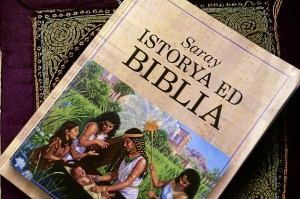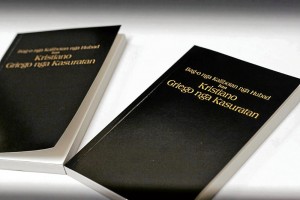New Waray-waray Bible for easy read
Finally, some three million speakers of Waray-waray in the country can read and understand the Bible more clearly in their native tongue.
After two years, the Bag-o nga Kalibotan nga Hubad han Kristiano Griego nga Kasuratan (the New World Translation of the Christian Greek Scriptures) in Waray-waray was released simultaneously during the annual Bible-based convention organized by the Jehovah’s Witnesses (JWs) from Nov. 30 to Dec. 1 in Tacloban City in Leyte, Calbayog City in Samar, Borongan City in Eastern Samar and Catarman town in Northern Samar.
More than 15,000 copies of the Bible were distributed for free during the convention, said Dean Jacek, spokesperson of the Watch Tower Bible and Tract Society in the Philippines, the legal and corporate arm of the JWs.
Accurate translation
Article continues after this advertisementA research team composed of native Waray-waray speakers made sure that the translation was accurate, Jacek said. “This was the only translation project so far where several individuals were involved,” said the team in a statement.
Article continues after this advertisement“Because of this, translating this New World Translation of the Holy Scriptures in Waray-waray, which in other languages normally took many years to make, was reduced to about two years,” the statement said.
The team used as primary text the English edition of the New World Translation of the Holy Scriptures, which was prepared directly from the original languages by a committee.
This committee used as a basis for translating the Hebrew Scriptures into English the text of Rudolf Kittel’s “Biblia Hebraica,” editions of 1951-1955, and “Biblia Hebraica Stuttgartensia” of 1977.
Members of the translation team said they also consulted the Dead Sea Scrolls and numerous early translations into other languages.
For the Christian Greek Scriptures, the master Greek text of 1881, as prepared by Westcott and Hort, was used primarily but several other master texts were consulted, as well as numerous early versions in other languages.
Different
But what makes this new Waray-waray Bible different from other translations already available in the same language?
Jacek said the team used words that are simple and easy to understand by common speakers.
Nonspeakers may easily notice some variations in the language, which is spoken by people on Samar island and in some parts of Leyte, Masbate, Sorsogon and Biliran, and this was a
challenge for the translators, he said.
How did the team address this issue?
“While the team’s emphasis was on the majority of the readers, it also endeavored to render the message in a way that every Waray-waray speaker can understand,” it said. “In some cases, because of the linguistic problem among the Waray-waray speaking people, the version uses footnotes and a glossary to explain the meaning of a particular word that is commonly being used in some parts of the region but not in other areas.”
Jehovah
The team said the version avoids archaic words and even replaces old ones with words according to the modern world yet “it strictly keeps and restores God’s personal name, Jehovah, which most Bible translations have avoided to use.”
“In this new Bible, that holy name is brought back to where it originally occurred in the original texts,” it added.
The new Bible will soon be available online at www.jw.org.
Apart from the Bag-o nga Kalibotan nga Hubad han Kristiano Griego nga Kasuratan, three other Waray-waray Bible translations are currently available.
In 2007, the An Baraan nga Biblia (Binisaya Samar-Leyte version) was published by Rev. Msgr. Gaspar D. Balirete. Two other versions were published by the Philippine Bible Society—the An Baraan nga Kasuratan and the An Baraan nga Biblia.
In 1908, a group of Samareños under the supervision of Swedish pastor Eric Lund took the lead in translating and publishing the Bible in Waray-waray.
The New World Translation of the Holy Scriptures can now be read in whole or in part in more than 100 languages, including Cebuano, Ilocano, Hiligaynon, Pangasinan, Bicol and Filipino.
More than 170 million copies have been distributed around the world.

